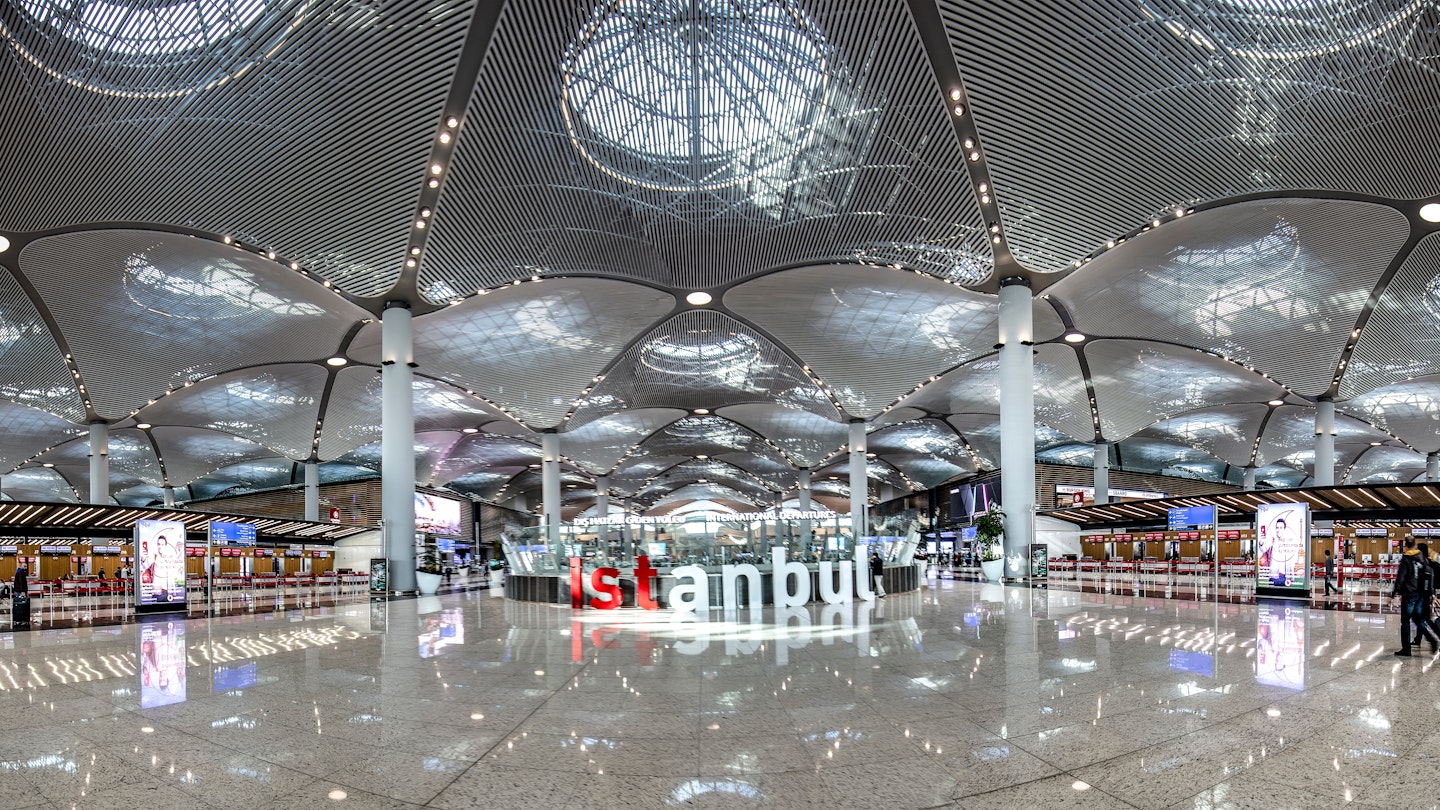For the architecture or sci-fi geek, there’s nothing like the thrill of transiting through or arriving into an airport that’s designed for style as well as substance. Here are ten breathtaking visions of the future that everyone with an affinity for technological innovation should have on their bucket list.
Istanbul Airport (Turkey)
Word has it that the newly-opened Istanbul Airport will be bigger than Manhattan when it’s fully completed in 2027. The architects responsible are London-based Grimshaw in collaboration with Haptic and Nordic, the firm responsible for the masterplan for the new Oslo Airport, which will be the first energy positive airport city in the world. The layout is inspired by Istanbul’s history and culture, with a control tower that looks like a tulip (Turkey’s national flower) and a main transit hall that pays homage to the configuration of the Strait of Bosphorus.
Ramon International Airport (Israel)
Located in the Negev desert outside Eilat, this ultra-modern airport, which opened last year, features interior courtyards, floor to ceiling windows, and a white aluminum panelled exterior reflecting the intense heat of the desert sun. It has been likened to a mirage. Due to the extreme climate conditions, construction often commenced after dark, illuminated by floodlights.

Beijing Daxing International Airport (China)
Beijing not only boasts two airports, but its newest is the largest single-structured one in the world, at an incredible 7.5 million square feet. Designed by the late Zaha Hadid, the starfish-shaped terminal is both aesthetically intriguing and efficient, with a flexible floorplan that can be adapted depending on traffic volume. Passengers will only have to walk a maximum of eight minutes to reach any part of the airport. The airport hopes to become the largest and busiest in the world, aiming for an eventual capacity of 100 million passengers each year. It will also feature seven runways, plus a high-speed rail connection to the city and a new motorway network.
Tocumen International Airport (Panama)
Another new Norman Foster-designed airport is Tocumen in Panama, which opened last year and has been likened to an alien spaceship. The sleek structure mirrors the Panamanian landscape, bringing the country’s lush scenery indoors. At the heart of the hangar is a vibrant garden, planted with flora from Panama’s tropical forests.

Singapore Changi Airport (Singapore)
Singapore’s Changi Airport is the most significant hub in Asia, and last year witnessed the opening of The Jewel, its new nature-themed retail and entertainment complex, designed by Safdie Architects. Travelers could happily spend hours between flights here, making it a popular destination even for local residents who visit on weekends to admire the world’s tallest indoor waterfall cascading from the top of the steel dome and explore the Rain Vortex, the centerpiece of the Shiseido Forest Valley, a five-story greenhouse of living walls.
On the upper level is Canopy Park, a 13,000-square-meter complex of gardens, walking trails, playgrounds, and animal topiary. Work has commenced on the airport’s new Terminal 5, which is scheduled to open in the mid-2020s and will have a capacity of 50 million passengers annually.
Kuwait International Airport (Kuwait)
Norman Foster won the contract for the state-of-the-art Kuwait International Airport terminal, which is expected to open later this year. Known for having one of the hottest and most inhospitable climates in the world, the airport structure will include special skylights to brighten the halls and deflect direct radiation. Additionally, a roof covered in solar panels is planned to conserve energy, along with towering concrete columns resembling traditional dhow sailboats. Foster aims for his design to achieve LEED Gold standing, making it the first terminal in the world to do so.

Chicago O’Hare International Airport (Illinois)
Due to open in 2021, the $8.5 billion extension to Chicago’s O’Hare airport will add ten gates located off a concourse, featuring a soaring atrium filled with plants. The architects responsible for the skeletal façade, shaped like the Chicago River, are Studio Gang, founded by Illinois native Jeanne Gang, with offices in New York, San Francisco, and Chicago. They won the competition to design the airport, competing against more famous architectural practices such as those of Santiago Calatrava and Norman Foster.
Louis Armstrong New Orleans International Airport (Louisiana)
New Orleans’ new terminal, designed by Pelli Clarke Pelli Architects, cost $1.1 billion to build. It features three concourses, 35 gates, and a three-story atrium with a performance space for live jazz. The design is inspired by the geography of NOLA, characterized by curving canopies, glass walls, and terrazzo floors depicting the twists and turns of the Mississippi River Delta.

Berlin Brandenburg, Germany
Originally scheduled to open in 2012, Berlin’s €6 billion Brandenburg airport now looks set to open later this year, or possibly in 2021. Surprisingly, the airport had to be re-designed during the construction phase because the original design by architect Meinhard von Gerkan did not include enough retail space. The project has faced several issues and has operated as a ghost terminal for years; however, once it does eventually open, it will feature a large modern terminal with two runways and will combine the operations of Berlin’s two existing airports.
Madrid-Barajas Airport Terminal Four (Spain)
Although Richard Rogers designed Terminal Four nearly two decades ago, it remains notable for pushing boundaries in airport design. Rogers received the Stirling Prize in 2006 and numerous accolades for his joyful vision, characterized by an undulating wooden ceiling supported by a forest of rainbow-colored trees. In this terminal, even the lights and air conditioning vents are crafted to resemble sculptures.





